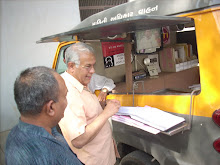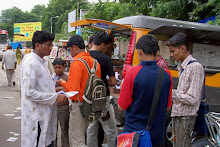The Sunday Guardian: New Delhi: Sunday,
September 18, 2016.
Delhi’s Aam
Aadmi Party (AAP) government is dithering on its election promise of adding
30,000 beds to the existing hospitals owned by it in five years, even as
thousands of hapless patients of dengue and chikungunya are queuing up at these
hospitals for treatment.
According to
an RTI reply provided by the Delhi government, it has added only 1,302 beds in
around 15 months, which is just 5% of what was promised. The government has
also not given Delhi any hospitals after coming to power.
As per the
figures provided by the Directorate General of Health Services, Delhi government
hospitals had 9,423 functional beds as against the sanctioned strength of
10,859 beds until 31 March. The bed count increased by only 1,302 until 27 June
this year. The Delhi government owns 39 hospitals, with a total of 10,725 beds.
The AAP, in
its 70-point election manifesto last year, had promised to add 30,000 beds in
the hospitals. Out of these, 4,000 were supposed to be for maternity wards. The
party said it would ensure the international standard of providing five beds
for every 1,000 people. However, according to the reply, some hospitals, in
reality, have fewer beds compared to the sanctioned strength. Babu Jagjivan Ram
Hospital has only 100 functional beds compared to the sanctioned bed strength
of 150. Similarly, in Babasaheb Ambedkar Hospital, there are 500 beds against
the strength of 540. G.B. Pant Hospital has 697 functional beds compared to the
sanctioned strength of 714.
According to
the RTI activist Mukesh Gupta, who obtained the information from the
Directorate General of Health Services, thousands of dengue and chikungunya
patients want to be admitted in hospitals, but are not getting beds. “As per
the promise, the government should have added at least 6,000 beds in one year
on an average, for the next five years in order to fulfil its promise. Had the
government been sincere, it would have added at least these many beds in the
past 15 months. But the Chief Minister and other ministers are busy in Punjab
and Goa elections and have hardly any time for citizens of Delhi, who had elected
them last year,” he said.
According to
information provided in the RTI reply, Lok Nayak Hospital has the highest
number of beds (1,888), followed by GTB Hospital (1,729). As per the norms of
the World Health Organization (WHO), there should be at least five beds for a
population of 1,000. However, Delhi lags much behind, with only 2.71 beds for
1,000 people.














































































